Are Brugmansia Flowers Right for Your Yard?
Updated: Feb. 15, 2023
Brugmansia—also known as angel's trumpet—makes a gorgeous addition to your garden. Here's what to know about these pollinator favorites.
Our editors and experts handpick every product we feature. We may earn a commission from your purchases.
Brugmansia Care and Identification
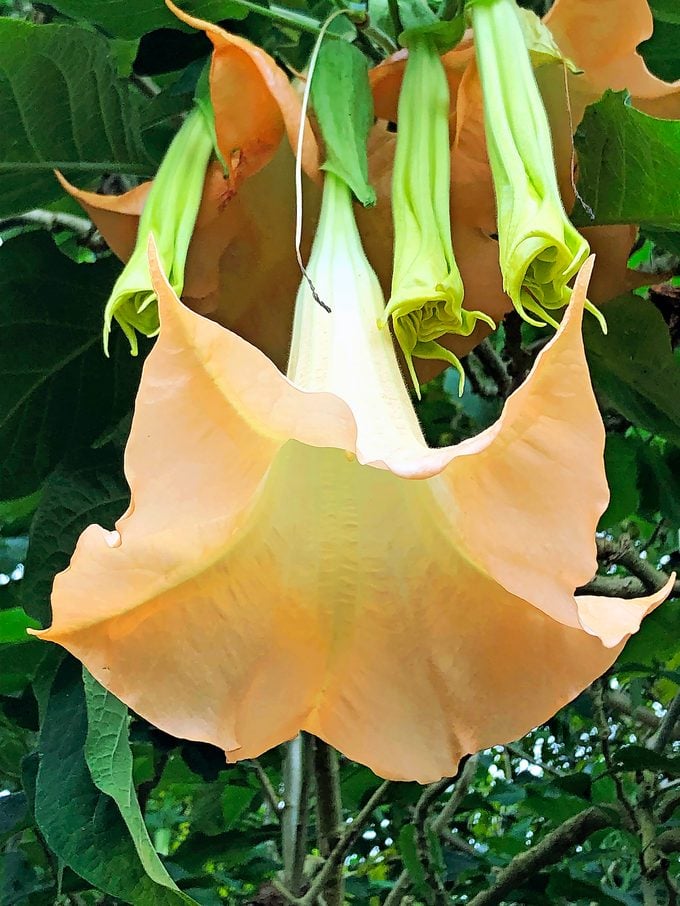
“What kind of flower did I photograph in Hawaii (above)?” asks Birds & Blooms reader Anne Cuthbert of West Chester, Ohio.
Gardening expert Melinda Myers: Your photo subject is a Brugmansia, commonly called angel’s trumpet. This evergreen shrub is hardy in Zones 7 to 10—it may die back to the ground in the northern parts of its hardiness zones—and is grown as an annual elsewhere. Hummingbirds and moths are attracted to the large flowers, and the plants are resistant to deer and drought while tolerating light frosts.
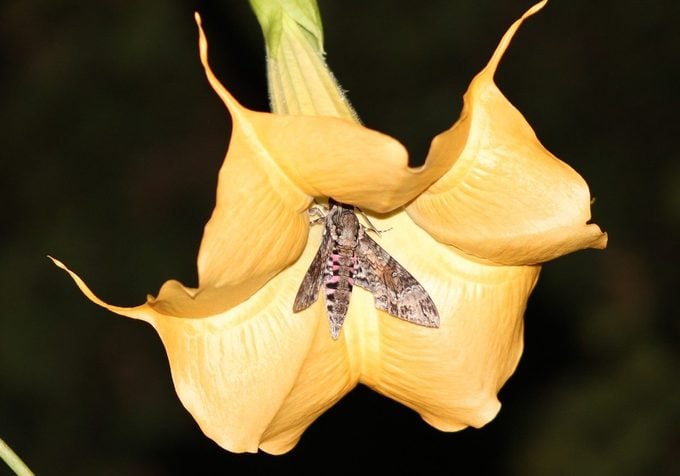
This plant prefers full to part sun and rich, organic soil with good drainage. Angel’s trumpets in colder climates can be moved indoors and grown as a houseplant by a sunny window or under artificial lights. You can also move the plant to a cool, poorly lit location and water just often enough to keep the soil barely moist and the plant dormant during winter. Move the plant back outside after the danger of frost has passed.
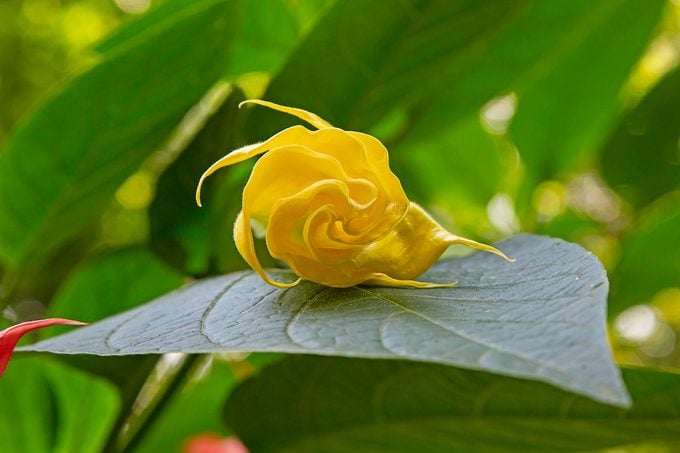
Although angel’s trumpet is pretty to look at, it is also highly toxic to people and pets. Keep it away from cats, dogs and curious little ones, and use caution when handling any part of the plant.
Psst—these houseplants aren’t safe for dogs.
Can You Grow Brugmansia From Seed?
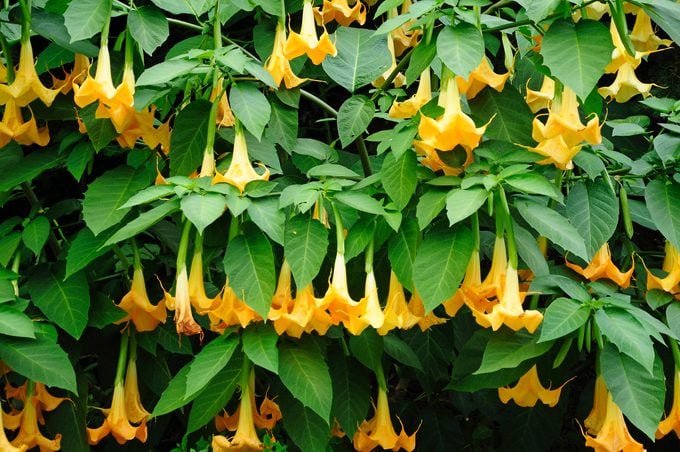
“How can I get the seeds of Gabriel’s trumpet to germinate? I’ve tried soaking, nicking and freezing them from recent to older seed harvests, to no avail,” asks Birds & Blooms reader Ted Lloyd of Ottawa, Ontario.
Melinda says Gabriel’s trumpet is one of several common names for Brugmansia. Others may know it as angel’s trumpet. Most varieties are not self-fertile, meaning they need to be pollinated by another variety for seed to form. This also means their offspring will likely be different from the parent plant. Follow these steps:
- Collect seeds from dried pods. The seeds inside the prickly pod have a corky covering.
- Soak the seeds 24 to 48 hours before planting. And then remove the corky covering. Soaking the seeds will soften them, making the removal of the covering easier and allowing for germination. (Here’s how and when to start seeds indoors).
- Plant the seeds ¼ inch below the soil surface in a sterile, well-drained potting or seed-starting mix. The seeds and leaves are highly toxic if ingested, so handle plants and store seeds with care. Be patient; it can take several weeks to a month or more for seeds to sprout.
Check out the top 10 tube-shaped flowers that attract hummingbirds.
Brugmansia Flower Colors
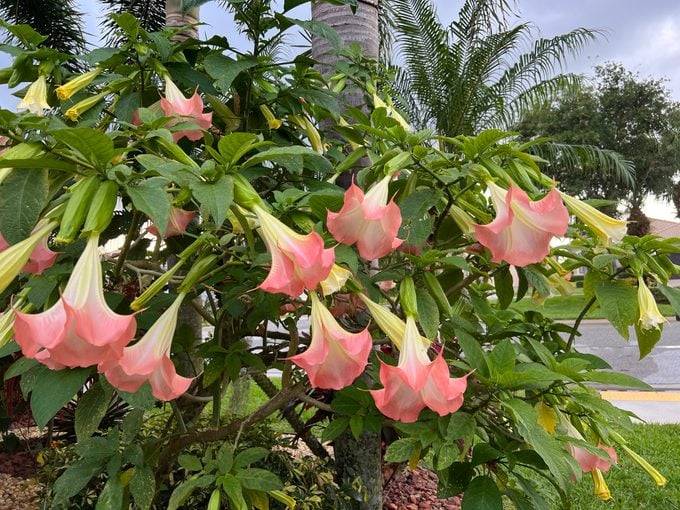
If you’re considering adding Brugmansia to your garden, you’ll have no shortage of options from which to choose. Bloom sizes can range widely, as can colors; commonly grown varieties are white, red, orange, pink or yellow.
Next, discover the benefits of growing a moon garden.
